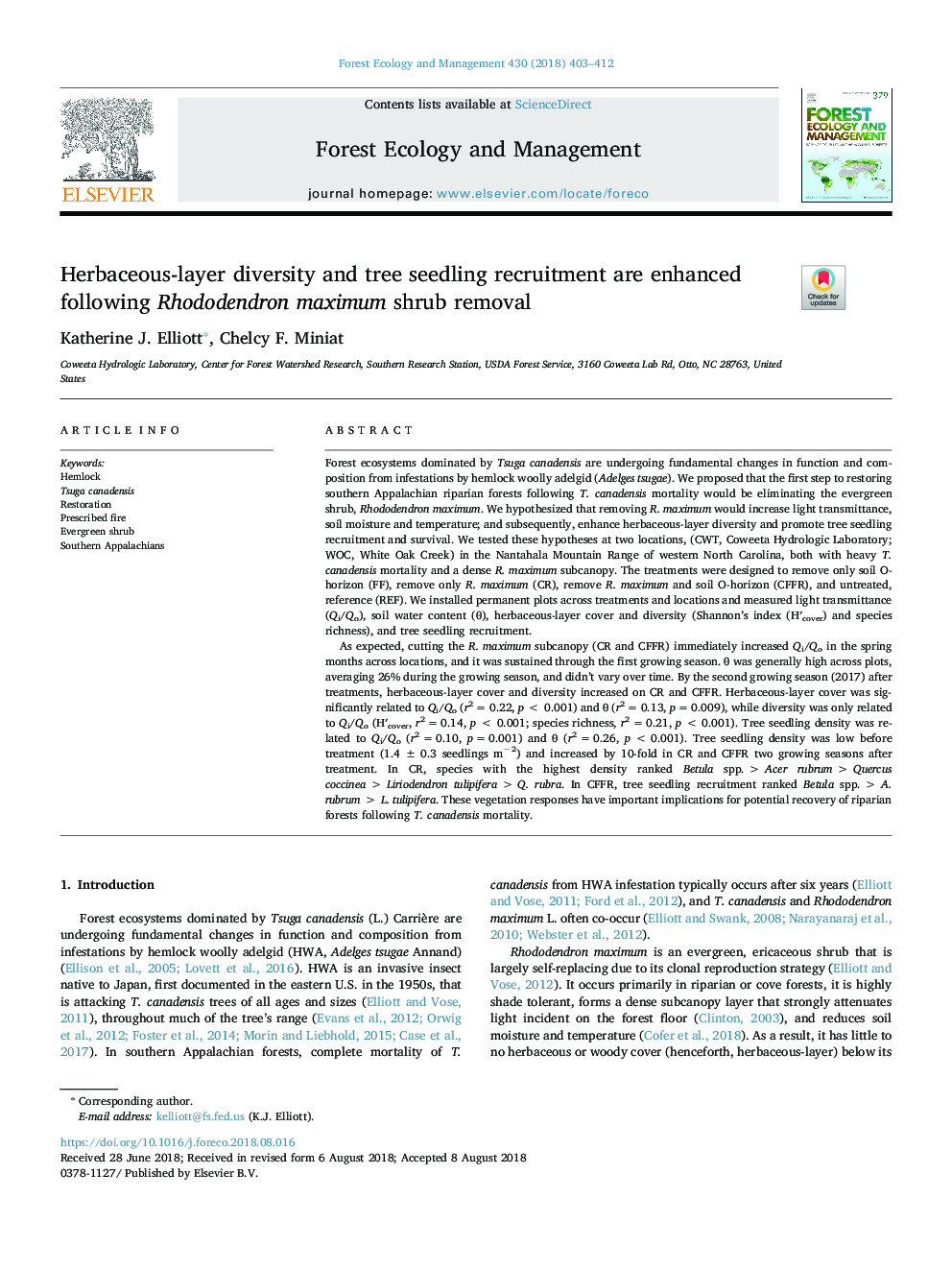| Article ID | Journal | Published Year | Pages | File Type |
|---|---|---|---|---|
| 11000035 | Forest Ecology and Management | 2018 | 10 Pages |
Abstract
As expected, cutting the R. maximum subcanopy (CR and CFFR) immediately increased Qi/Qo in the spring months across locations, and it was sustained through the first growing season. θ was generally high across plots, averaging 26% during the growing season, and didn't vary over time. By the second growing season (2017) after treatments, herbaceous-layer cover and diversity increased on CR and CFFR. Herbaceous-layer cover was significantly related to Qi/Qo (r2â¯=â¯0.22, pâ¯<â¯0.001) and θ (r2â¯=â¯0.13, pâ¯=â¯0.009), while diversity was only related to Qi/Qo (Hâ²cover, r2â¯=â¯0.14, pâ¯<â¯0.001; species richness, r2â¯=â¯0.21, pâ¯<â¯0.001). Tree seedling density was related to Qi/Qo (r2â¯=â¯0.10, pâ¯=â¯0.001) and θ (r2â¯=â¯0.26, pâ¯<â¯0.001). Tree seedling density was low before treatment (1.4â¯Â±â¯0.3 seedlings mâ2) and increased by 10-fold in CR and CFFR two growing seasons after treatment. In CR, species with the highest density ranked Betula spp.â¯>â¯Acer rubrumâ¯>â¯Quercus coccineaâ¯>â¯Liriodendron tulipiferaâ¯>â¯Q. rubra. In CFFR, tree seedling recruitment ranked Betula spp.â¯>â¯A. rubrumâ¯>â¯L. tulipifera. These vegetation responses have important implications for potential recovery of riparian forests following T. canadensis mortality.
Related Topics
Life Sciences
Agricultural and Biological Sciences
Ecology, Evolution, Behavior and Systematics
Authors
Katherine J. Elliott, Chelcy F. Miniat,
